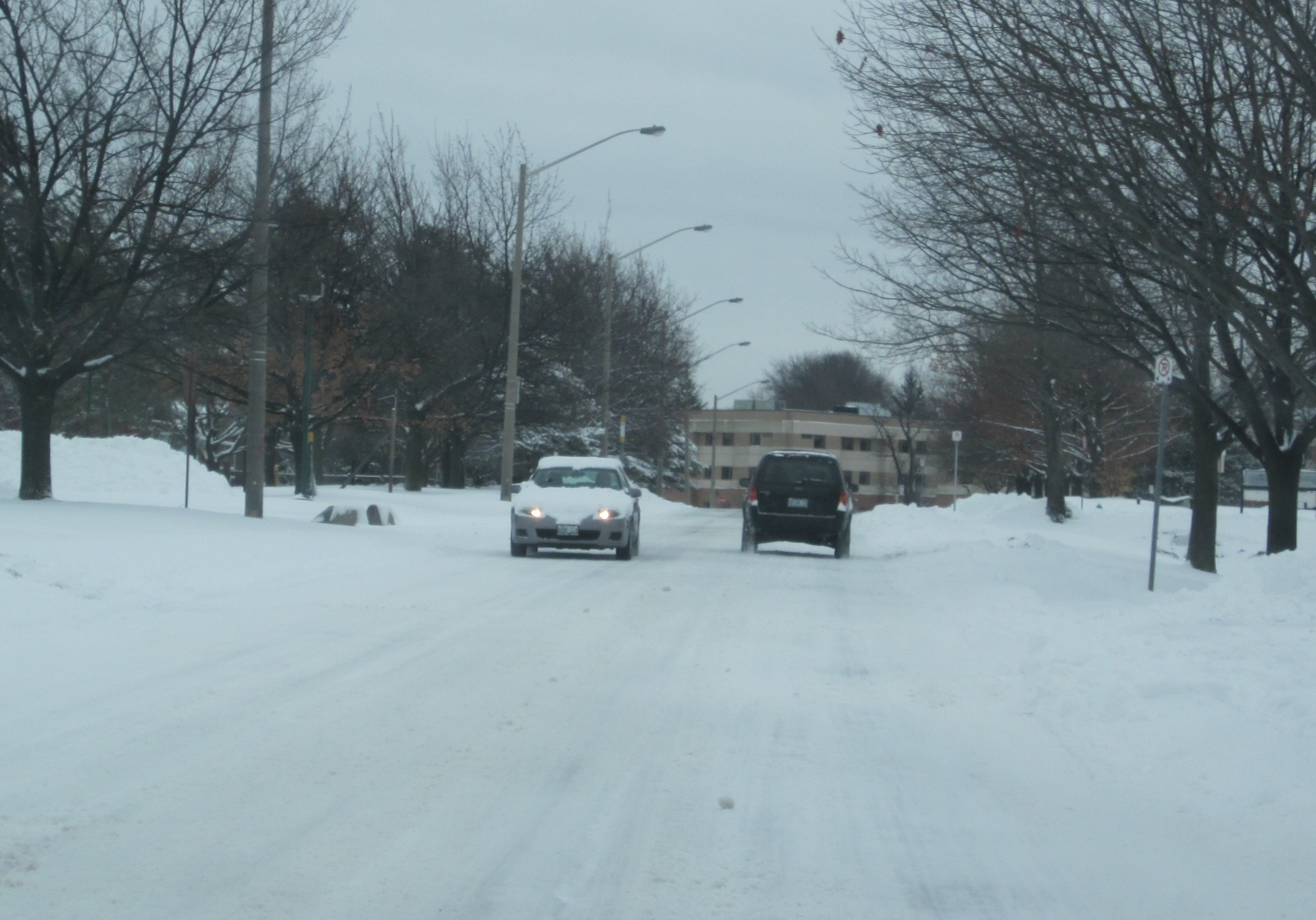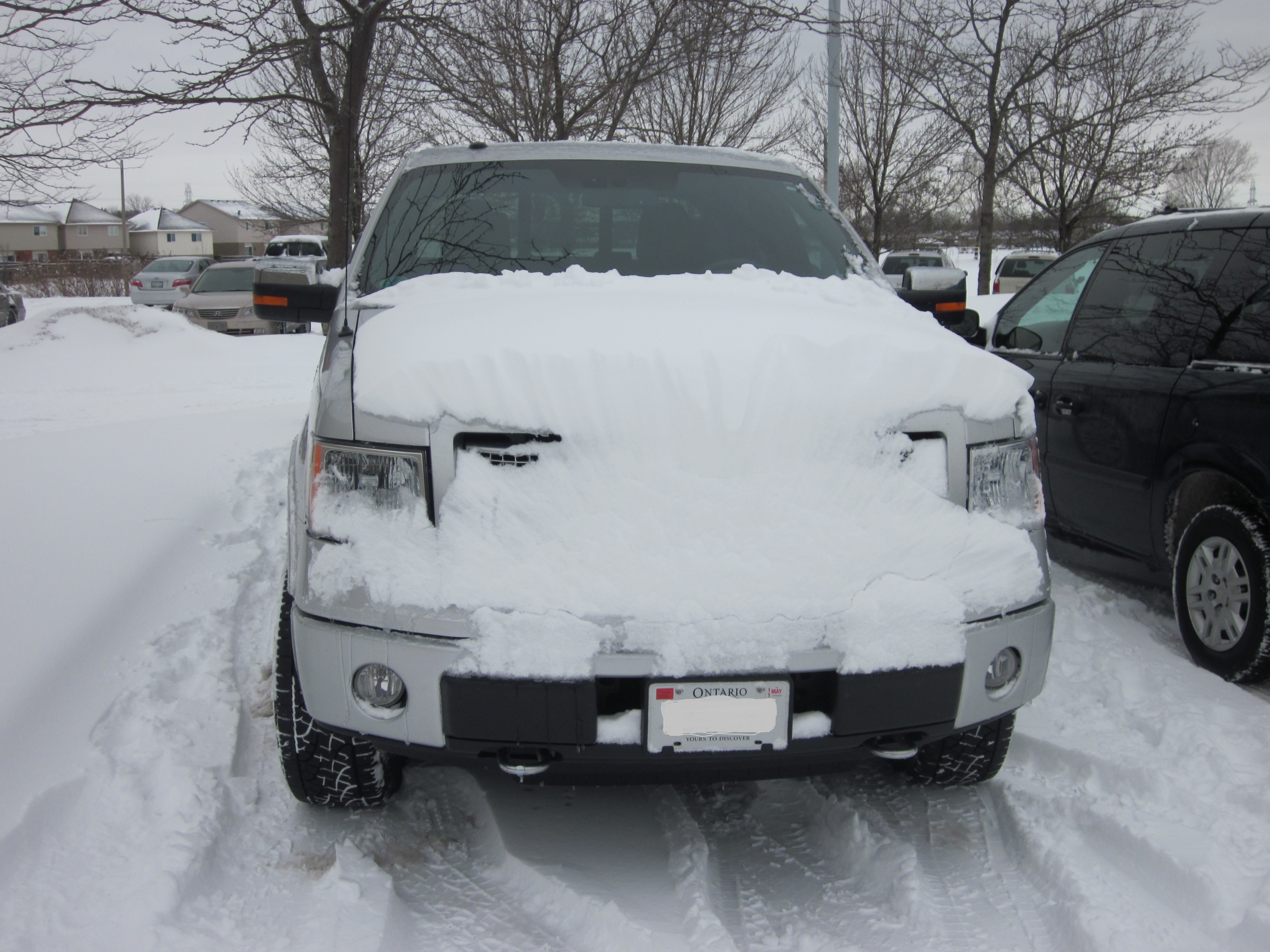If you have winter driving anxiety, this will help
 Let’s face facts; there are many things we avoid doing because of fear. We may not want to admit it, but we tend to avoid doing things because we’re afraid of what might happen. Our fear consumes us so much we can’t stop thinking about this fear. Know what I’m talking about yet? It’s the fear of driving in winter weather. What if you found solutions to this fears – perhaps a compromise – would that allow you to tackle your winter driving anxiety? I hope so, because I’m about to help you.
Let’s face facts; there are many things we avoid doing because of fear. We may not want to admit it, but we tend to avoid doing things because we’re afraid of what might happen. Our fear consumes us so much we can’t stop thinking about this fear. Know what I’m talking about yet? It’s the fear of driving in winter weather. What if you found solutions to this fears – perhaps a compromise – would that allow you to tackle your winter driving anxiety? I hope so, because I’m about to help you.
The first step of controlling this winter driving anxiety is confidence. Having confidence in yourself as a driver and confidence your vehicle is ready to handle the winter conditions will help you reach your destination safely. Let’s start with your vehicle. Preparing your vehicle for winter is more than a check-up. Placing winter tires on your vehicle will help your vehicle grip the road better. Winter tires are a softer rubber compound than all-season tires and therefore are more flexible when the temperature drops compared to the all-season tires. Winter tires are known to stop the vehicle quicker than all-season tires and grip the road better to allow the driver to accelerate more effectively. More info about winter tires here.
 Ensure your vehicle is ready to drive before you get into it. Ensure all the snow, ice or frost has been scraped off the windows, mirrors, headlights and tail lights. This allows for complete visibility for both you and so other road users can see you. Just before you begin to clear your vehicle, start the engine. By the time you complete your clearing, the defroster and fan can do their job to improve the visibility from inside your vehicle. More info about clearing your vehicle can be found here.
Ensure your vehicle is ready to drive before you get into it. Ensure all the snow, ice or frost has been scraped off the windows, mirrors, headlights and tail lights. This allows for complete visibility for both you and so other road users can see you. Just before you begin to clear your vehicle, start the engine. By the time you complete your clearing, the defroster and fan can do their job to improve the visibility from inside your vehicle. More info about clearing your vehicle can be found here.
Now that your vehicle is ready to go, you need to be ready. Ensure you’re not wearing bulky clothes. Heavy winter coats prohibit arm movement and can affect how you steer. After the vehicle is warm inside, take that winter coat off and wear a sweater instead. Thick soled boots also affect how you apply the gas and brake pedals. Wearing winter boots in winter weather is a good idea, but perhaps store those big heavy boots in the trunk in case you get stuck and need to get out and dig. Wear thinner soled boots or shoes to help you get in touch with your pedals. More info can be found here.
Now you’re driving. Things will need to change compared to driving during other seasons. Looking at least two blocks ahead will help you spot a change in traffic patterns, such as noticing brake lights or if everyone in your lane is changing to the next lane. Don’t wait until you see the reason; change lanes early. If you need to brake, brake early and gradually. This allows you to keep your vehicle under control.
As you travel in traffic, increase your following distance. Many drivers make the mistake of using car lengths to measure this distance. It’s actually measured in seconds. Normal road conditions can allow drivers to maintain a minimum of two seconds behind the driver ahead of them. In slippery conditions, double that distance. When the driver ahead of you passes a fixed item at the side of the road, begin counting. You should reach that same fixed item a few seconds later. A bigger following distance allows you to brake early and more gradually. Braking late may cause more panic and perhaps a skid. Why add to your anxiety by braking late? More info can be found here.
Give yourself more time to reach your destination. If the conditions are less than ideal, leave with lots of extra time so you won’t need to take chances with your driving decisions. Better yet, if the weather is too severe, stay home or take public transit. Let the professionals do the driving.
Hopefully you’ll take these tips to heart. Share with those who may also have winter driving anxiety. It’ll make a big difference when it comes to driving safely in winter weather. And one final tip to rid yourself of winter driving anxiety – don’t forget to breathe.
If you like this article, please help support the effort for safe roads. Support HERE
**Have a quick listen to this short “Speed Bumps” podcast it discusses winter driving mentality.
https://radiopublic.com/speed-bumps-a-safe-driving-podca-WoXZxm/s1!28642

Softer rubber remains flexible at lower temperatures than that in all-season tires, don’t think winter tires get more flexible as the temperature falls.
Agreed. It was in relation to that of all-season tires which become hard like a rock when temperatures fall. Whereas winter tires remain flexible. It was the way I worded the sentence. Thanks for bringing it up.
Actually yes they do…and remain flexible and gripping to -40 and below.
Your comments on winter tires are NOT strong enough. They should be mandatory as they are around the world. All season tires are a misnomer caused by a ’80s tire promotion. How the tire industry is still allowed to use the terminology is scandalous. They are 3 season tires only! Between -10°C and -14°C (+7°F to +14°F) they become exactly the equal of hockey pucks. That is scary and fatal to hundreds of people every year.
Hi Scott, awesome post!! Regarding your last line about not forgetting to breathe, I actually did a post on this very topic on my own Driving in the Real World blog a few years ago. It was about singing while driving in bad winter conditions. Would love to hear what you think, either way: http://www.drivingintherealworld.com/journal/2012/1/5/singing-on-the-ice.html
It doesn’t get down into the minuses where I live, but I’m absolutely terrified of hitting an ice patch, especially while going down hills. Also I drive a minivan, which seems to skid even when starting at low speed sometimes on hardly wet roads. Do minivans contact the road especially poorly due to their weight distribution, as has been suggested to me? Are there good family cars that are especially good for winter driving? Should I get chains? Thanks.
Modern vehicles generally have a balanced weight distribution. Other than proper tires – and properly inflated tires – you could also downshift as you approach the crest of a hill. Lowering the gear selector, including in automatic transmission vehicles, can help to keep your speed slower as you approach a stop, especially on icy roads. proper tires are a great help.
Thanks very much!
I moved to Denver, CO from Albuquerque, NM about two years ago (Jan 2017). November 2017, I was driving back from visiting family in NM and was caught in the first storm of the year. I ended up hitting an ice patch directly after a bridge. The truck next to my tiny Honda Civic began fish-tailing and when I slightly veered left to avoid him I hit the patch of ice, slid into the median doing a 180 degree turn. The right side of my vehicle hit the median block and I flipped 4 times across the opposite side of i25 and landed upside-down. As a 22 year old girl, driving alone, I was devastated. I’ve decided to stay in Denver due to meeting the love of my life here. However, this winter has been such a struggle with even just getting to work. I get so worked up and forget to breath and by the time I’m at my destination I am in tears (which in turn, is more dangerous).
I appreciate you writing this. I’ve done a lot of work around fear and confidence, but I’m still so traumatized so having articles like this to read and learn from certainly helps.
Very glad this information helps!
Don’t forget lights! So many people are NOT turning their lights on…..they think they automatically come on (front and back…not just front running lights) and even if they have a light sensor, it doesn’t turn them on soon enough. Every day, I follow drivers with no tail lights on!! So important, but especially when it dark and raining or snowing.